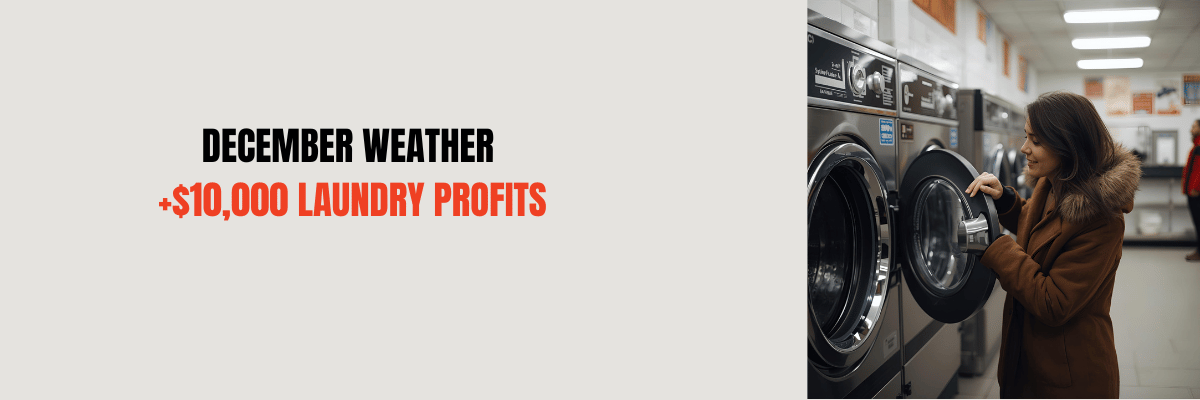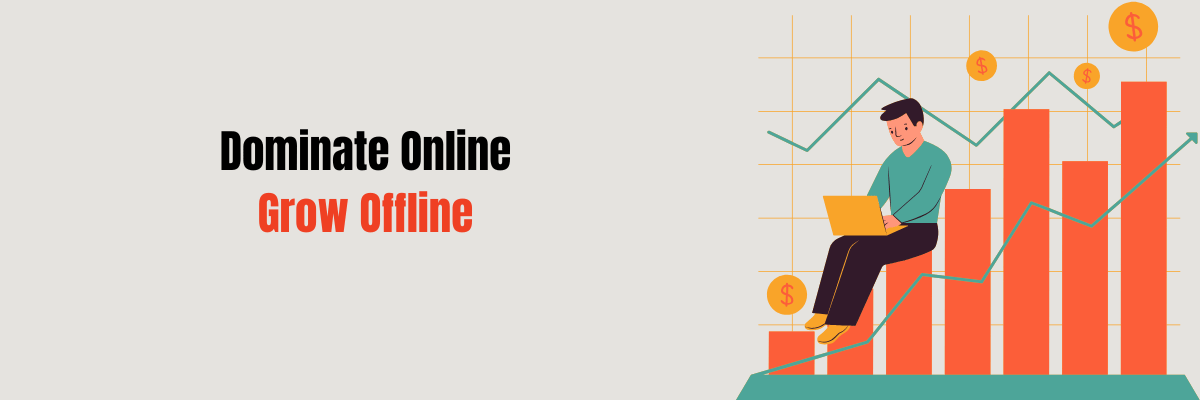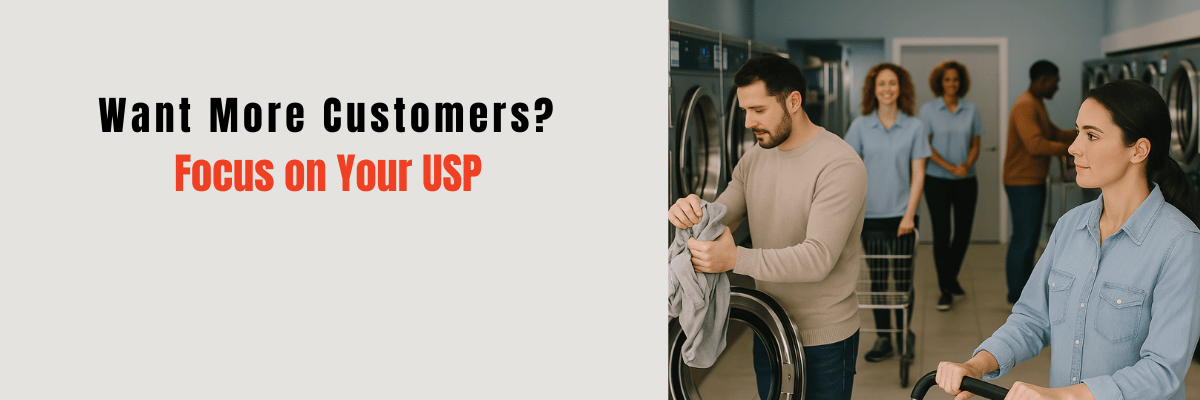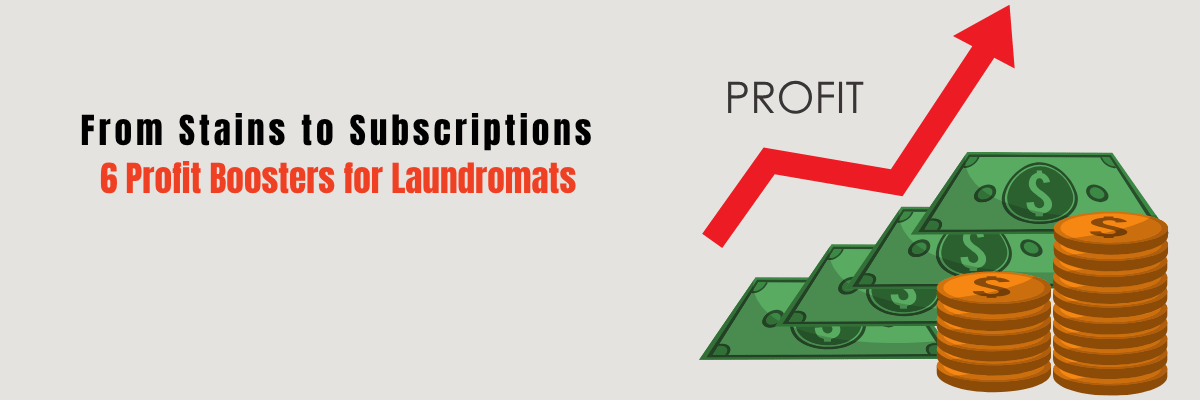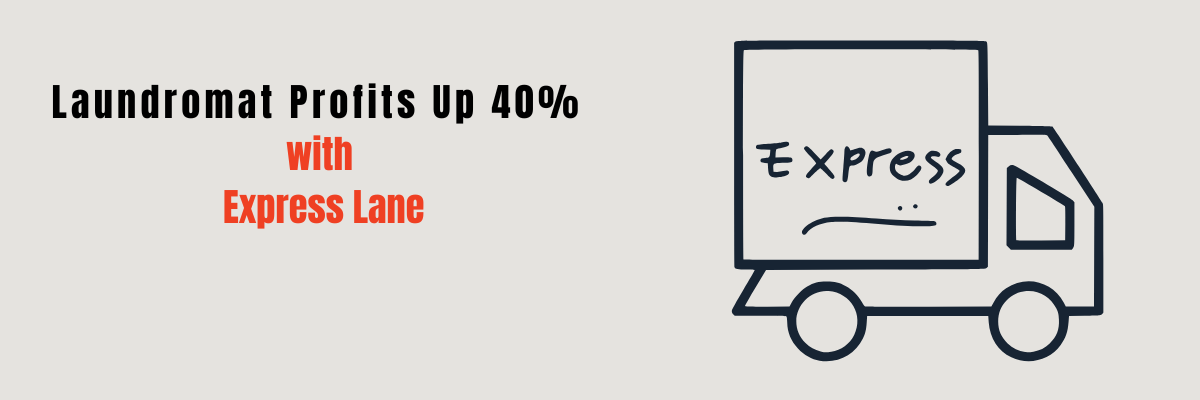Rent, Buy, or Build: What's the Best Location Option for New Laundromat Owners?


Starting a laundromat business is an exciting but complex endeavor. One of the most critical decisions you’ll face is determining the best location option for your laundromat: should you opt for a laundromat for rent, laundromat for lease, or invest in purchasing or building your own location? Each choice comes with its own set of financial, operational, and marketing implications that can significantly impact your business’s success. In this guide, we will explore the pros and cons of renting, leasing, buying, and building a laundromat location, focusing on factors such as costs, flexibility, control, and marketability. Whether you’re a first-time laundromat owner or an experienced entrepreneur looking to expand, this guide will help you make an informed decision that aligns with your long-term business goals.
1- Renting a Laundromat Location
For new laundromat owners, renting a location offers a flexible and often more affordable entry into the business. Instead of a large upfront investment typically required for buying or building, renting can reduce initial costs by up to 50%. Leasing arrangements typically range from 3 to 10 years, giving you the flexibility to assess the market without making a long-term financial commitment. Another advantage is that the landlord is usually responsible for significant repairs and structural maintenance, which can save you considerable expenses over time. For instance, renting a 2,000 sq. ft. space in a busy urban location might cost between $3,000 and $7,000 per month, while purchasing a similar property could easily require an investment of $400,000 or more.

Renting is particularly well-suited for self-service or hybrid laundromat models, where customer volume can fluctuate depending on foot traffic and local demand. The flexibility to expand or move to a different area without the burden of property ownership can be a significant advantage in high-traffic locations. Furthermore, renting allows you to focus your resources on upgrading Laundromat equipment or adding additional services, such as wash-and-fold or vending machines, rather than being tied down by property-related expenses. This makes renting an attractive option for new laundromat entrepreneurs who want to test the waters of the market while keeping their operational focus sharp.
Pros:
Lower Initial Investment: Renting generally requires less upfront capital than buying or building, making it easier to start the business.
Flexibility: You can adjust to market changes and relocate more easily if the area doesn’t perform well.
Quick Setup: Leasing an existing laundromat space can expedite your launch, enabling you to get the business up and running faster.
Cons:
Renovation Costs: Although the initial cost may be lower, upgrading the space to meet your business needs—such as installing new machines or improving the interior—can become an added expense.
Limited Control: Lease agreements may restrict your ability to make significant changes or improvements to the property.
Potential Rent Increases: As the lease progresses, there’s always the risk of rent hikes, which can impact your long-term profitability.
Example:
Imagine renting a prime Laundromat location in a busy area. You may need to invest an additional $50,000 in equipment upgrades to modernize outdated machines. While renting helps lower your upfront costs, future rent increases could squeeze profitability if the landlord raises rates after a few years.
2- Buying a Laundromat Location
For those seeking full control over their laundromat business, purchasing a property can be an excellent option. Owning the location grants you the ability to make significant modifications—whether installing cutting-edge, energy-efficient machines or redesigning the layout to improve customer experience. These changes can increase profits by 20-30% annually, as they allow you to cater more effectively to customer needs. Owning the property also eliminates any restrictions imposed by a landlord, giving you complete control over your operating hours, staff management, and long-term business plans.

However, buying a laundromat location requires substantial capital. Typically, a down payment of 20-30% of the property’s value is needed, which means that for a $500,000 property, you would need at least $100,000 upfront. Additionally, property ownership entails ongoing costs such as maintenance, repairs, and property taxes, which could add thousands of dollars annually to your expenses. While buying offers control and equity growth, it may not be ideal for first-time laundromat owners or those operating flexible models like pickup and delivery services, where the ability to quickly relocate can be crucial.
Pros:•
Equity Building: Owning the property allows you to build equity, turning it into a long-term investment that can appreciate over time.
Lower Marketing Expenses: If the property already houses a laundromat, you inherit an established customer base, reducing the need for extensive marketing.
Complete Autonomy: You have full control over renovations, operations, and other business decisions without being constrained by lease agreements.
Cons:
High Initial Investment: Buying a property requires significant upfront capital, which can limit your ability to invest in other areas of the business, such as marketing or staffing.
Maintenance and Repairs: As the property owner, you're responsible for all upkeep, from building repairs to dealing with local zoning laws, adding ongoing costs.
Less Flexibility: If the location doesn’t meet your expectations, it’s more difficult and time-consuming to sell or relocate compared to renting.
Example:
Let’s say you buy a laundromat in a well-established area for $400,000. While the upfront cost is high, the existing customer base reduces the need for aggressive marketing, potentially leading to faster profitability. However, you’ll also need to budget for regular maintenance and possible upgrades, which could cost several thousand dollars annually.
3- Building a Laundromat Location
Constructing a laundromat from the ground up provides you with the ultimate flexibility to create a space tailored precisely to your vision and operational needs. This approach allows you to design everything, from an optimized layout that improves workflow to incorporating customer-friendly features like energy-efficient machines, Wi-Fi, and vending machines. A well-designed laundromat can significantly enhance both customer satisfaction and operational efficiency, potentially boosting long-term profitability. However, the financial commitment is substantial, with construction costs typically ranging between $400,000 to $1 million, depending on factors such as location and size. Moreover, building can take anywhere from 12 to 24 months, delaying your business launch and the point at which you start generating revenue.

While the customization that comes with building your own laundromat is unmatched, it may not be the most practical solution for new owners or those running flexible operations like pickup and delivery services. For these models, the ability to scale quickly and keep initial costs low is crucial, which makes renting a more appealing option. Renting a ready-to-operate space allows you to open your doors with monthly costs ranging between $3,000 to $7,000, significantly lowering upfront investment and risk. It also gives you the flexibility to adjust your business model over time, especially as you grow and explore add-on services like wash-and-fold or dry cleaning, without being tied down by a high initial investment.
Pros:
Complete Customization: Building from scratch lets you design a laundromat that aligns perfectly with your vision, from the layout to the equipment and customer experience.
Latest Technology: Starting fresh allows you to incorporate the newest, most energy-efficient machines, leading to lower utility costs and improved service quality.
Potential for Long-Term Gains: Though the upfront costs are high, a custom-built laundromat can generate more revenue over time due to enhanced efficiency and customer satisfaction.
Cons:
Significant Upfront Costs: The cost to build can easily exceed $500,000, making it a large financial commitment.
Extended Time to Launch: Construction delays could mean waiting over a year to open, significantly postponing your ability to generate revenue.
Higher Market Risk: With no existing customer base, you’ll need to invest heavily in marketing to attract clients to your new location.
Example:
If you choose to build a laundromat in a bustling urban area, the ability to design the space with modern, energy-efficient machines and an aesthetically pleasing interior can give you a competitive edge. However, the initial investment could be around $600,000, and it may take 12 to 18 months before your laundromat becomes operational, adding additional pressure to cover costs and drive customer engagement quickly once you launch.
4- Key Considerations for Choosing the Right Option
When deciding whether to rent, buy, or build, you should consider the following factors:
Budget: How much can you realistically afford to invest upfront? If your capital is limited, renting might be the best option, but if you can make a larger investment, buying or building could offer better long-term returns.
Location: Is the area already well-established with laundromat users, or will you need to build awareness from scratch? Established neighborhoods might make buying more attractive, while newer developments may require building.
Time to Market: Do you need to open your laundromat quickly? Renting offers the fastest route, while building will take the most time.
Long-Term Vision: How long do you plan to operate in this location? If you’re looking for long-term growth, buying or building might be more financially rewarding over time.
Marketing Factors for Buying, Renting, or Building a Laundromat: Which Is Easiest?
When it comes to marketing a laundromat, whether you buy, rent, or build a location plays a significant role in your strategy. Each option presents unique challenges and opportunities, and understanding how to best leverage them can make a big difference in attracting customers.
1. Buying a Laundromat
Marketing Advantage: Established Customer Base
• What Works Best: When you purchase an existing laundromat, you often inherit an established customer base. This gives you a head start in marketing since local customers already know about the business. The focus here is more on customer retention than acquisition. You can use loyalty programs, promotions, and minor rebranding to retain existing customers while gradually attracting new ones through word of mouth.
• Why It’s Easier: You save on initial marketing efforts because people are already familiar with the location. Plus, since you're working with an operational business, you can track current customer habits and improve their experience, making targeted marketing much easier.
• Strategy Tip: Implement customer loyalty programs and highlight any new improvements (new machines, eco-friendly practices) to keep the existing customer base engaged.
2. Renting a Laundromat
Marketing Advantage: Flexibility and Adaptability
• What Works Best: Renting a location means you may need to start from scratch with customer acquisition. The marketing focus should be on community engagement and local awareness campaigns. Since you may not have the deep financial commitment that comes with purchasing or building, you can invest more in marketing to build your brand quickly. Running local ads, promoting grand opening events, and utilizing social media advertising can help drive foot traffic.
• Why It’s Easier: Renting provides flexibility, allowing you to experiment with different marketing techniques without the pressure of long-term property ownership. If the location doesn't work, you can easily adjust your marketing strategy or even move to a better area.
• Strategy Tip: Use location-based social media ads, Google My Business listings, and local influencer marketing to create awareness in the community.
3. Building a Laundromat
Marketing Advantage: Customization and Strong Brand Identity
• What Works Best: If you build a laundromat from scratch, you have the opportunity to design the entire customer experience, allowing you to craft a unique brand from the very beginning. However, because you're new to the market, you'll need to focus heavily on customer acquisition and brand awareness. Digital advertising, direct mail, and local partnerships (e.g., with nearby cafes or fitness centers) are essential in creating buzz about your new location.
• Why It’s More Challenging: Since you’re building from the ground up, there’s no existing customer base to work with. You’ll need a strong marketing campaign to introduce your brand and prove its value to the community. Plus, building locations typically take more time to launch, so you'll need a strategy to drum up interest during construction.
• Strategy Tip: Launch a pre-opening marketing campaign to generate excitement. Consider "coming soon" banners, a grand opening event, and offering early-bird discounts or free laundry days to attract customers.
Which Is Easiest for Marketing?
• Easiest: Buying a laundromat is generally the easiest from a marketing perspective because you already have an established customer base. Your marketing efforts can focus on improving retention and growing your brand, rather than building awareness from scratch.
• Moderate: Renting offers more flexibility, and while you'll need to work on customer acquisition, you're not tied down financially, making it easier to adapt your marketing strategies if needed.
• Most Challenging: Building a laundromat is the most challenging marketing-wise since you have no existing customer base and must create brand awareness from scratch. However, this option offers the most potential for establishing a strong, differentiated brand in the market.
Each option has its own advantages, but the ease of marketing largely depends on the pre-existing customer awareness and your ability to effectively engage with the community.
Conclusion
Each option—renting, buying, or building—offers unique benefits and challenges, and the right choice depends on your business’s specific needs, budget, and vision. Renting provides flexibility and lower initial costs, making it an ideal option for new owners or those experimenting with different business models. Buying, on the other hand, allows for greater control and the opportunity to build equity, especially when inheriting an established customer base. Building a laundromat from scratch offers unmatched customization, though it requires significant upfront investment and a longer timeline. Ultimately, the best decision will align with your growth objectives, market strategy, and available resources. Choose wisely to set the foundation for long-term success in the competitive laundromat industry.
FAQs: Rent, Buy, or Build a Laundromat Location
Question- What is the most cost-effective option for starting a laundromat: renting, buying, or building?
• Renting is typically the most cost-effective option, especially for new owners, as it requires a lower upfront investment and allows you to test the market without the long-term commitment of buying or building. You can rent a location for $3,000 to $7,000 per month, whereas buying or building can cost $400,000 or more.
Question- What are the major benefits of owning a laundromat location?
• Owning the property gives you complete control over renovations, design, and operations. You also build equity over time, and there's potential for the property to appreciate in value. Additionally, you can make major improvements, such as adding energy-efficient machines or expanding services, to boost profitability.
Question- Is it faster to open a laundromat by renting, buying, or building?
• Renting is usually the fastest way to get your business up and running since you can move into an existing space. Buying can also be quick if the property is already set up as a laundromat, but building from scratch takes the longest, often 12-24 months, due to construction and setup time.
Question- What are the risks of building a laundromat from the ground up?
• Building involves significant upfront costs, often between $400,000 and $1 million, as well as the risk of delays in construction. Additionally, you'll need to create a new customer base from scratch, requiring a substantial marketing investment, and the extended timeline before generating revenue can add financial pressure.
Question- What are the potential downsides to renting a laundromat location?
• While renting offers flexibility, it comes with some limitations. You may face restrictions from the lease agreement on making significant changes to the space, and rent increases over time can affect profitability. Additionally, you won't build equity in the property.
Question- Can I relocate my laundromat easily if I rent a location?
• Yes, renting allows for greater flexibility, and if the location doesn’t perform well, you can relocate after your lease term or sublease the space. This makes it a lower-risk option for new business owners who want to test the market.
Question- What are the ongoing costs associated with owning a laundromat property?
• As a property owner, you are responsible for ongoing expenses such as property taxes, maintenance, repairs, and insurance. These costs can add 1-3% of the property value annually to your operating expenses.
Question- Which option—renting, buying, or building—is best for long-term profitability?
• Buying or building offers the most potential for long-term profitability, as you build equity in the property and have the ability to make upgrades that can improve efficiency and customer satisfaction. However, renting allows you to invest more in marketing and service improvements upfront without being tied down by property ownership.
Question- Is it easier to secure financing for buying or building a laundromat?
• Financing is often easier to secure when buying, as lenders can appraise the existing business and property. However, financing for building may be more challenging due to the higher risk and extended timeline involved in construction.
Question- What factors should I consider when deciding between renting, buying, or building a laundromat?
• Consider your budget, time-to-market, long-term business goals, and market conditions. If you need a quick entry and lower upfront costs, renting might be best. For full control and long-term investment, buying or building offers more advantages, but with higher costs and risks.
Question- What is the difference between renting and leasing a laundromat?
• Renting and leasing are often used interchangeably, but leasing typically refers to a longer-term commitment, usually 3 to 10 years, while renting may imply a shorter, more flexible agreement. Both options allow you to operate a laundromat without purchasing the property, but lease agreements often include more formal terms.
Question- What should I consider before looking for a laundromat for rent?
• Before renting a laundromat, consider the location's foot traffic, the condition of the existing equipment, potential for growth in the area, and your budget for monthly rent. You should also assess whether any renovations or upgrades are needed and if the landlord will cover part of those costs.

